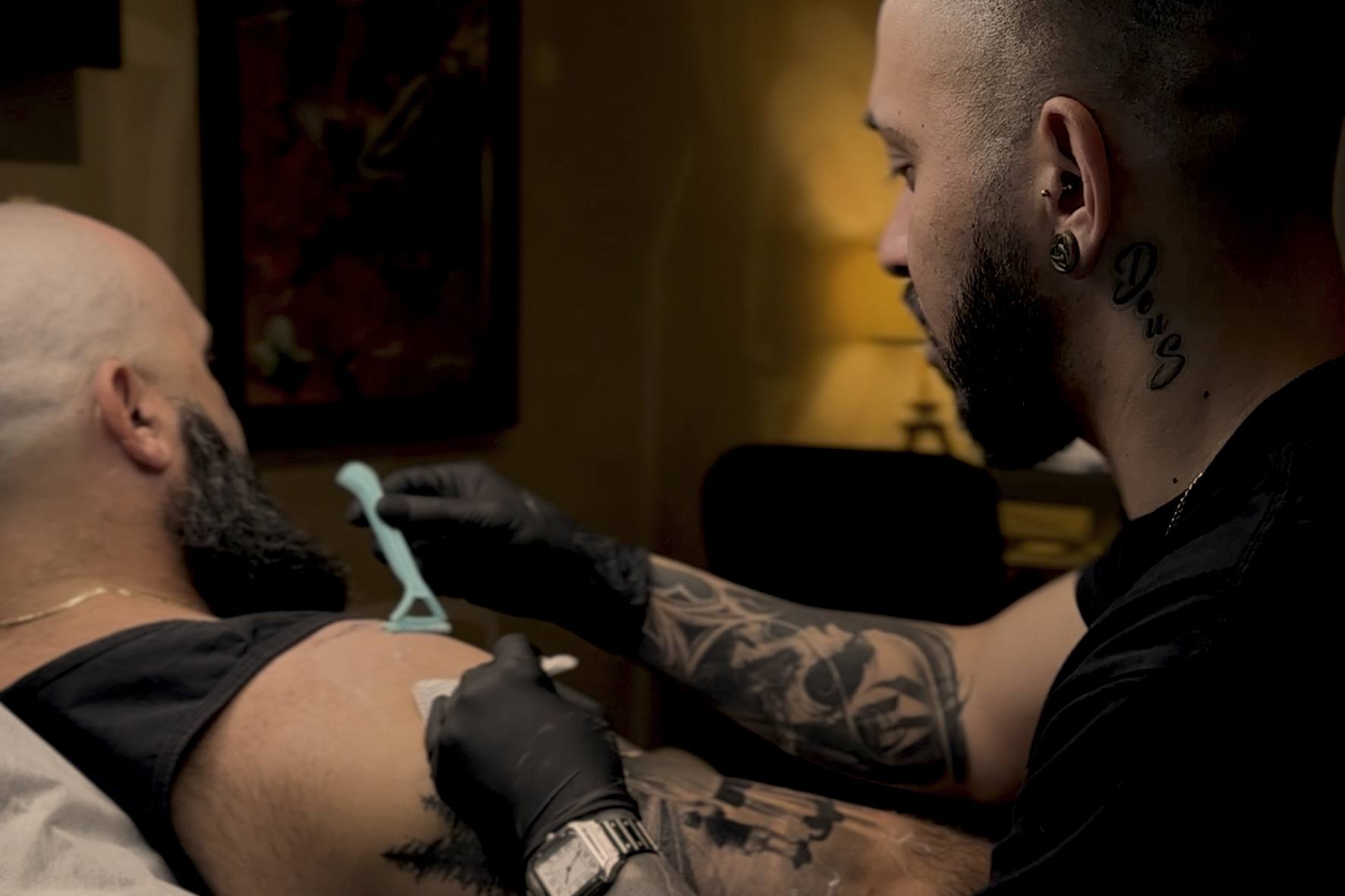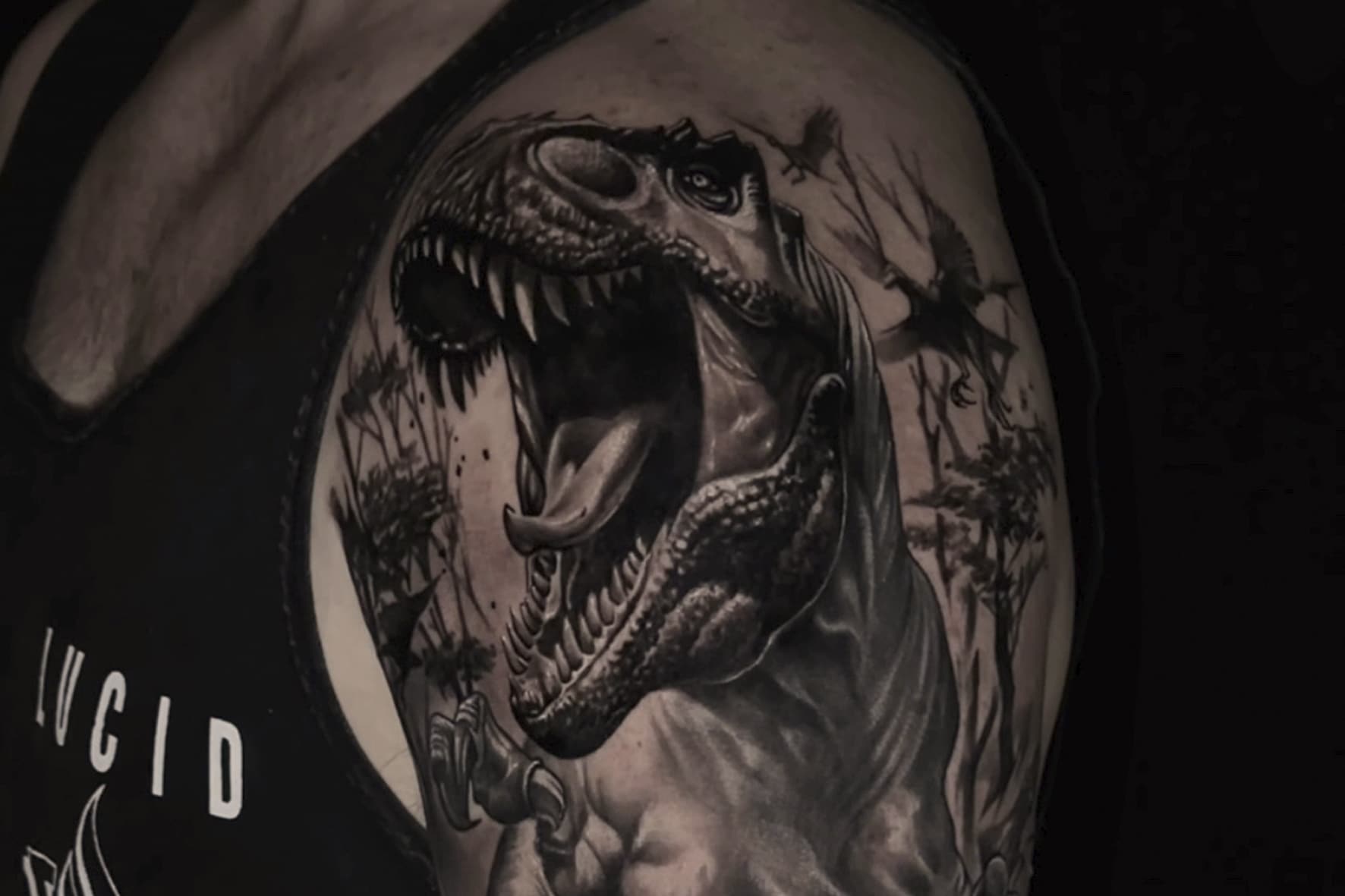Black and gray tattooing is one of the most striking forms of body art, renowned for its ability to capture intricate details and create breathtaking images. For many tattoo artists, especially those specializing in realism, mastering this technique is crucial to bringing life and depth to their creations. In this article, we’ll explore how tattoo artists use black and gray to create artwork that appears to leap off the skin, examining the techniques that make this magic happen.
The Magic of Contrast
The secret behind realism in black and gray tattoos lies in the skilled use of contrast. Contrast refers to the difference between the darkest and lightest areas of an image. In a tattoo, this is achieved through the precise application of shadows, which help shape and add depth to the design.
Tattoo artists use different dilutions of black ink, resulting in a range of gray tones. These tonal variations are essential for creating the illusion of depth. Darker areas recede while lighter areas advance, creating a three-dimensional feel that is crucial for realism.
Shading Techniques
There are several techniques that tattoo artists use to create shadows and, consequently, depth in their work. One of the most common is “smooth shading,” where the artist applies the ink gradually, starting darker and lightening as they move. This creates a smooth transition between tones and avoids harsh edges, which can break the illusion of realism.
Another popular technique is “whip shading,” which involves a quick, slightly curved motion of the tattoo machine. This results in a lighter ink application at the edges, creating a natural gradient from dark to light.
The Role of Textures
In addition to shading, texture plays a vital role in creating realism. In black and gray realism tattoos, textures can mimic surfaces like skin, hair, or materials like fabric and stone. Attention to detail, such as wrinkles in the skin or pores, adds an extra layer of authenticity to the tattoo.
For example, in the submitted image, you can observe how shadows and textures were applied to create a sense of realism. The shaded areas rise and fall with the anatomy, and fine textures like wrinkles and subtle lines help bring the design to life.
The Importance of Reference
To achieve this level of detail, tattoo artists often work with photographic references. These references help ensure that proportions and shadows are applied correctly, creating an accurate representation of what is intended. Using references also allows the tattoo artist to study how light interacts with the surface of the object, essential for creating convincing shadows.
Conclusion
Creating black and gray tattoos that look real is an art form in itself. It requires a deep understanding of how light and shadow work, as well as technical skills to apply these concepts to the skin. The result is a timeless piece of art that, despite being monochromatic, possesses impressive depth and vitality.
If you’re considering a black and gray tattoo or simply admire this art form, it’s fascinating to see how contrast, shadows, and textures can transform a simple image into something that appears to be alive. As Washington Gomes, founder of Washington Tattoo and a realism specialist, says: “Shadows are where life happens.” And with the right technique, this couldn’t be more true.





